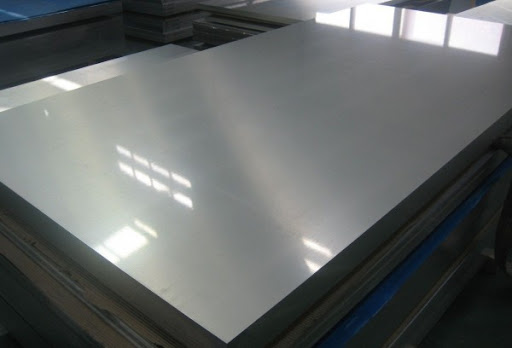1.Surface Inclusions
Characteristics: The surface of cold-rolled stainless steel plates exhibits non-metallic inclusions in the form of dots, lumps, or lines, intermittently or continuously distributed along the rolling direction, with colors ranging from reddish-brown, dark gray, to white. In severe cases, the sheets may have holes, cracks, or breaks.Causes: Poor slag formation during steelmaking, low casting temperature, inclusion of protective slag during continuous casting, and uncleaned non-metallic materials in steel pots or pouring tubes.

2.Scale
Characteristics: Irregular tongue-like or fish-scale-like black spots appear on the surface, with varying areas of distribution and uneven depths. These scales are difficult to remove during pickling and can form pits when they flake off.Causes: Uncleaned mold wall during steelmaking, and residual scale on the slab surface not completely removed during rolling.
3.Pressed Oxide Scale
Characteristics: The surface shows black spots in the form of dots, stripes, or fish scales, with varying areas of distribution and uneven depths. These scales are hard to remove during pickling and can form pits when they flake off.Causes: Excessive slab heating temperature, prolonged time, strong oxidizing atmosphere in the furnace, insufficient high-pressure water pressure before rolling, blockage of high-pressure water nozzles, and insufficient descaling.
4.Lack of Pickling
Characteristics: The top and bottom surfaces of the sheet show strip-like, dark gray patches without luster, and in severe cases, the entire surface of the sheet is affected.Causes: Different temperatures and cooling rates across the steel plate, improper pickling processes such as low concentration and temperature, too fast pickling speed, insufficient pickling time, or high ferrous ion concentration without timely acid replenishment, and insufficient stretch descaling coefficient affecting pickling effect.
5.Adhesion
Characteristics: Layers of annealed steel coils stick together, and after leveling, produce point-like arc-shaped creases or arc-shaped creases in rows. In severe cases, tearing or holes appear when the sheet is unrolled, resulting in scrap.Causes: Excessive tension during steel coil winding, poor plate shape, soft steel quality with low carbon and silicon content, excessively high heat treatment furnace temperature, or fast cooling speed after annealing, and damage to the steel coil before loading into the furnace.
6.Oxidation Color
Characteristics: The surface of the cold-rolled stainless steel sheet is oxidized, with colors ranging from deep blue at the edges to light blue, brown, and light yellow, collectively referred to as oxidation color.Causes: Inadequate sealing of the protective cover during annealing or gas leakage, high-temperature discharge from the furnace (steel coil temperature greater than 110°C), high dew point of protective gas or low hydrogen content, insufficient pre-washing time before heating, and the presence of residual oxygen in the furnace, leading to oxidation of the stainless steel coil in an oxidative atmosphere.
7.Spots
Characteristics: The surface of the annealed cold-rolled stainless steel sheet shows irregular or island-like black or brown patterns.Causes: Incomplete addition of emulsifying liquid at the exit of the rolling mill, which carbonizes during heating to form spots; low pressure of the last stand air blower, which fails to clean thoroughly; the air blower is not turned on when threading, and is turned off when the tail is thrown; insufficient pre-washing time after loading, and carbonization of the emulsifying liquid during heating to form spots.
8.Scratches
Characteristics: The surface of the cold-rolled stainless steel sheet shows straight and fine grooves of varying depth, parallel to the rolling direction, continuous or intermittent, sparse or dense, without any fixed pattern. Before leveling, the scratches are smoother, and the grooves are gray-black; after leveling, the scratches have burrs and appear metallic bright.Causes: Sharp edges or hard objects on parts of various units such as pickling, rolling, leveling, and finishing that come into contact with the cold-rolled stainless steel sheet, causing relative motion; non-operation of various rollers on the finishing line (such as feeding rollers, pressing rollers, guide plates, etc.), causing scratches; changes in the speed of uncoiling or winding, or relative motion between layers.
9.Wrinkle
Characteristics: The surface of the cold-rolled stainless steel sheet shows uneven wrinkles, mostly occurring in sheets thinner than 0.8mm. The edges of the wrinkles form a certain angle, and severe wrinkles become pressed folds.Causes: The sheet runs off-center, stretching on one side and forming wrinkles on the other; poor sheet shape with large edge waves or central waves, causing wrinkles when the sheet passes through the leveling machine, straightening machine, or feeding rollers; improper adjustment of the straightening machine, leading to uneven deformation.
10.Impression
Characteristics: The surface of the cold-rolled stainless steel sheet shows certain depth depressions, which are impressions with periodicity and varying numbers, and the defect areas are brighter in color.Causes: Various auxiliary rollers (tension rollers, pressing rollers, feeding rollers, straightening rollers, etc.) stick to iron filings and dirt during the production process, causing impressions; iron filings and foreign objects fall into the stack of cold-rolled stainless steel sheets.
11.Tower Shape
Characteristics: The shape of the steel coil is defective, with one circle of the end face of the cold-rolled stainless steel coil being higher (or lower) than another circle, continuously, shaped like a pagoda, mostly appearing in the inner (outer) part of the cold-rolled stainless steel coil.Causes: The centering device of the coiler is out of order, and the strip runs off-center; the cold-rolled stainless steel coil is not straight, such as sickle bend, narrow pull, etc.; poor sheet shape, with large edge waves, causing the cold-rolled stainless steel coil to exceed the control limit of the photoelectric tube; improper operation and adjustment, small shrinkage of the coil tube, and the inner circle is pulled out when the pusher pushes out the cold-rolled stainless steel coil.
Next:H Beam vs I Beam









